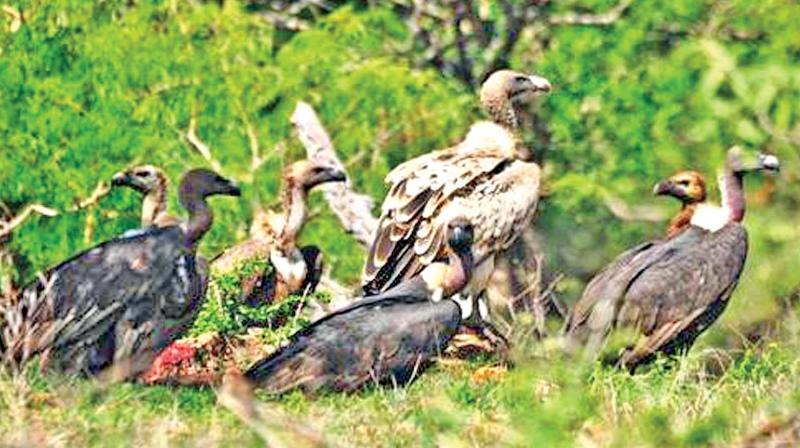Vultures now inhabit Ebband slopes
Arjuna tree (Marudha Maram in Tamil) to built nests, besides ficus and wild mango trees along the riverine ecostyem in the jungles.

Ooty: As the International Vulture Awareness Day on the first Saturday in September reminds the globe to think more on conserving the endangered vulture, an active avian scavenger highly helpful in keeping the jungles clean, researchers here in the hills said that positive trend in conservation measures has been observed as vulture population had begun to inhabit Ebbanad slopes near Ooty.
Dr B. Ramakrishnan, associate professor of Zoology and Wildlife Biology at the Government Arts College here who has taken up studies along with A. Samson, a researcher at the college, on the breeding biology and ecology of the vulture habitats in Moyar valley bordering Mudumalai Tiger Reserve (MTR), said that that out of nine species of vultures in India, four including the White-Rumped vulture, Long-Billed vulture, Red-Headed vulture commonly called as King vulture-a rare species, and Egyptian vulture, are found in different parts of South India.
But in Moyar Valley in Nilgiris all these four vulture species are found to thrive, though in small numbers, thus making it a hub of the thriving and breeding population of vultures. This apart, Himalayan Griffon and Cinereous vulture species too have been spotted here, he noted.
He said that over the past few years there has been good increase in the breeding population of Long-Billed Vulture. Moreover, the nesting sites of the vulture population which was confined to two locations in Moyar Valley has now begun to expand as now it has been found in two more sites, even in Ebbanad slopes. “It is found that vultures in Moyar Valley prefer the tree top of
Arjuna tree (Marudha Maram in Tamil) to built nests, besides ficus and wild mango trees along the riverine ecostyem in the jungles. The tallness of the Arjuna tree protects the nest from predators and helpful in rearing the chicks, and gives easy accessibility to the water needs,” Dr Ramakrishnan explained.
Meanwhile, Mr. S.Bharathidasan, Secretary of Arulagam, the organization working for vulture conservation, said that eco-toxicological factors and the veterinary analgesic diclofenac were found to be the reasons for decline in vulture population in Indian skies.
Since vulture population is found in appreciable numbers in Moyar valley, collective action from officials, greens and the public is the need of the hour to conserve the existing vulture population in Moyar valley, a viable habitat for the bird to live.

